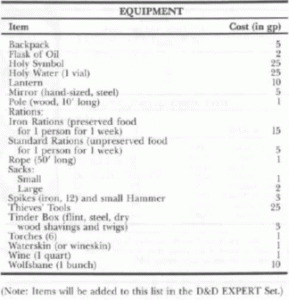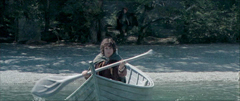
Monster Manual mummy
I’m looking at the AD&D Monster Manual entry for mummies, and there’s a lot of weirdness here.
No. Appearing: 2-8 I guess sometimes you find a mummy king and queen along with a few attendants, but I sort of imagine a typical encounter being against a single scary mummy. I guess that’s just in the movies.
Mummies are undead humans with existence on both the normal and the
positive material planes. I remember the negative material plane as being more undead-y. The 1e PHB says that the Negative Plane is “the place of anti-matter and negative force, the source of power for undead, the energy area from which evil grows.” The positive plane, on the other hand, “is a place of energy and light, the place which is the source of much that is vital and active, the power supply for good.” And it is crawling with mummies for some reason.
The mere sight of a mummy within 6″ will cause such fear and revulsion in
any creature, that unless a saving versus magic is successful, the victim
will be paralyzed with fright for 1-4 melee rounds. Note that numbers will
give courage, and for each creature above 6 to 1 mummy, the creatures
add +1 to their saving throw. If humans confront a mummy, each will
save at +2 on his dice. Classic 1e subsystem, including a saving throw bonus for outnumbering the mummies. I’m guessing that this is isn’t a general rule about fear, just about mummy-induced fear? And humans get a +2 bonus, because why?
The other fun thing about the fear save bonus for outnumbering a mummy is that it will never come up. Mummies appear in groups of 2 to 8. The average number of mummies is 5. In order to get a +1 bonus on saving throws, there must be 31 party members. I know that in 1e, you had a lot of henchmen, but still, that seems like a big group. Even if you only run into 2 mummies, you need 13 PCs to get a saving throw bonus.
Mummies can be harmed only by magical weapons, and even those do only one-half normal damage, dropping all fractions (5 becomes 2, 3 becomes 1, and 1 becomes 0 hit points of damage). What level are PCs fighting mummies? According to the Wandering Monster chart, you start encountering mummies on the fifth dungeon level, but you seem to encounter them most around the 9th or 10th level. I pity the poor sad sack who’s doing 1 damage at that level. I mean, nonmagic weapons don’t even work, so the fighter has at least a +1 sword. And most magic-user spells will do multiple dice of damage at that level, right?
Oh – the Wandering Monster table also indicates that you encounter 1-2 mummies as wandering monsters. So I guess you can outnumber mummies 6 to 1, just not in their lair.
A raise dead spell will turn the creature into a normal human (of 7th level fighting ability, naturally) unless the mummy saves versus magic. Naturally? Why naturally? Naturally 7th level, because mummies have 6+3 Hit Dice? or naturally fighting ability, not, say, clerical ability, because mummies are good at punching? Also, I’m curious what the 7th level fighter thinks of being raised from the dead. Is he like “Thank you for releasing me from that vile curse, now help me get these bandages off!” or is he like “You robbed me of eternal life, I shall punch you!”
And don’t get me started on the ethereal mummy, which always strikes by surprise.













